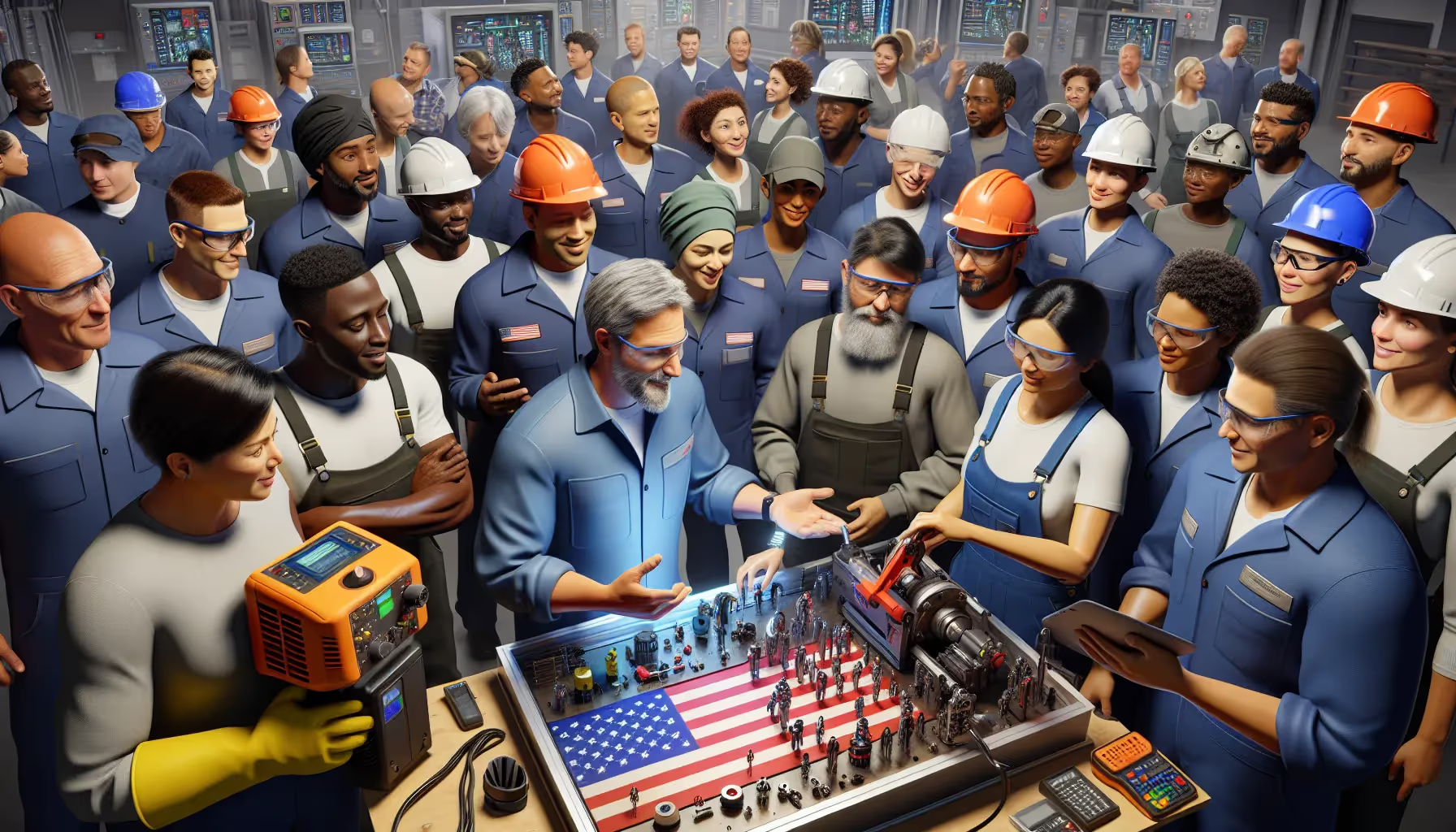Key Takeaways
- Increased Versatility: Cross-training equips technicians with diverse skills, enabling them to tackle multiple roles and enhancing their value within organizations.
- Boosting Job Satisfaction: Technicians report higher job satisfaction and engagement due to opportunities for skill development and varied responsibilities.
- Enhanced Team Collaboration: Cross-trained teams improve communication and teamwork, as technicians can easily step in for one another during absences or emergencies.
- Career Advancement Opportunities: Cross-training opens new career paths, allowing technicians to either transition to different roles or progress into leadership positions within their organizations.
- Promoting Continuous Learning: Ongoing education through cross-training keeps technicians engaged and prepared for evolving industry demands, ensuring long-term relevance in their careers.
- Measurable Productivity Gains: Companies that implement cross-training report a productivity increase of up to 30%, highlighting its significant impact on operational efficiency.
In today’s fast-paced work environment, cross-training has become a game changer for technicians looking to expand their skill sets and career opportunities. Studies show that companies with cross-trained employees experience up to a 30% increase in productivity and a significant boost in employee satisfaction. By equipping technicians with diverse skills, businesses not only enhance their workforce versatility but also create a more resilient team.
We’re witnessing a shift where adaptability is key. Cross-training empowers technicians to take on multiple roles, making them invaluable assets to their organizations. This approach not only fills skill gaps but also opens new avenues for career development, allowing technicians to explore different paths within their field. As we delve deeper into the benefits of cross-training, we’ll uncover how it can transform the landscape of technician careers and drive organizational success.
The Importance of Cross-Training
Cross-training plays a crucial role in maximizing technician versatility. By equipping teams with diverse skills, we create adaptable employees who contribute to organizational success while exploring new career paths.
What Is Cross-Training?
Cross-training involves teaching technicians multiple skills or roles within a service business. Instead of focusing solely on one task, technicians learn additional responsibilities, such as scheduling, customer service, and equipment maintenance. This approach fosters a more dynamic workforce ready to face challenges head-on. Think of it as learning more moves in a dance; it allows technicians to glide through tasks with confidence and grace. Who wouldn’t want to have the ability to bust out a new move at the right moment?
Benefits for Technicians
Cross-training brings several benefits. First, it boosts job satisfaction, creating a more engaged workforce. Technicians appreciate the opportunity to grow their skills and take on varied responsibilities. Companies can expect an increase in productivity—studies show as much as a 30% jump! Imagine what that could mean for our performance and customer satisfaction.
Cross-trained technicians also enhance teamwork. By understanding multiple roles, they better support their colleagues. Plus, if someone calls in sick, we can rely on our cross-trained team members to step in. This flexibility helps with technician scheduling and minimizes disruptions.
Have we ever been stuck in an emergency with no backup plan? It's a bit like being on a road trip with only one driver who falls asleep. Cross-training gives us more drivers in the car, making our professional journey much smoother. It’s about creating a community of versatile professionals ready to tackle any situation that comes our way.
Enhancing Technician Versatility

Cross-training plays a pivotal role in enhancing technician versatility. By teaching additional skills beyond their primary expertise, we create technicians who can tackle a variety of tasks. This adaptability addresses skill gaps and promotes a dynamic workforce ready to embrace challenges.
Skill Diversification
Cross-training allows technicians to develop diverse abilities that complement their primary skills. For instance, a technician trained in both plumbing and electrical work becomes an asset during emergencies. They can fix multiple issues, saving time and resources. Skill diversification reduces reliance on specialized individuals. This broader knowledge base helps teams collaborate more effectively. Teams become more resilient as technicians share knowledge and approach challenges from different angles.
Increased Problem-Solving Abilities
Technicians who acquire skills across multiple domains can work together more efficiently. Imagine a technician who knows HVAC systems teaming up with another who specializes in electrical setups. This collaboration speeds up troubleshooting and leads to faster, more effective solutions. The shared expertise fosters critical thinking and creativity. Teams can address complex technical challenges through diverse problem-solving methods.
Investing in cross-training not only benefits technicians but also their organizations. Enhanced versatility drives innovation and prepares technicians for evolving industry demands. Our adaptive workforce positions us for success, together.
Career Development Paths

Cross-training opens various avenues for technicians, enriching their skill sets and promoting career advancement. Technicians gain diverse abilities, allowing them to transition horizontally to fill different roles or vertically climb into leadership positions. Notably, with cross-training, companies can tap into their existing talent pool rather than relying solely on external hires. This strategy creates a more cohesive environment that empowers employees to grow.
New Opportunities in the Field
Cross-trained technicians adapt swiftly to shifts in workload or unexpected absences, reducing service interruptions. For example, when a technician calls in sick, a cross-trained colleague can step in without missing a beat. This flexibility fosters resilience in operational settings. Technicians with broad competencies are better equipped to embrace new technologies and processes, which is crucial in the fast-paced world of mobile workforce management. Businesses benefit from enhanced productivity, while technicians enhance their marketability and job satisfaction.
Importance of Continuous Learning
Continuous learning thrives through cross-training as technicians constantly build new skills. This ongoing education contributes to job satisfaction. It poses fresh challenges and growth opportunities, keeping work engaging. Technicians prepared for changes in their roles maintain relevance in their fields. Notably, a focus on adaptation cultivates organizational agility, allowing companies to stay ahead in an ever-changing landscape. With service business automation tools, such as technician scheduling software and route management solutions, technicians can streamline their daily operations while enhancing their skill set.
Implementing Cross-Training Programs

Implementing cross-training programs plays a crucial role in boosting technician versatility. These programs equip technicians with diverse skills, fostering a more adaptable workforce. Let’s explore the key components and success metrics for effective cross-training initiatives.
Key Components of Effective Programs
- Clear Objectives: Identify specific goals like enhancing adaptability or improving productivity. These targets provide direction for training efforts.
- Focused Training Modules: Develop structured modules covering multiple skills. Each module should focus on different aspects, ensuring comprehensive training.
- Collaborative Learning: Encourage team members to teach each other. This approach fosters camaraderie and shares knowledge throughout the workforce.
- Practical Experience: Provide hands-on training opportunities. Engaging technicians in real-world scenarios solidifies their learning and improves confidence.
- Feedback Mechanisms: Regularly assess progress and gather feedback. Continuous improvement keeps the training relevant and effective.
Emphasizing these components cultivates a skilled and versatile team. Technicians become more adept in various roles, enhancing our service delivery capabilities.
Measuring Success
Measuring success in cross-training programs requires focused metrics. Tracking these key areas shows the impact of training efforts.
- Productivity Metrics: Compare productivity levels before and after training. This measurement reveals the effect on efficiency and service execution.
- Flexibility and Adaptability: Evaluate how quickly technicians adapt to new roles. A high adaptability rate indicates effective cross-training.
- Employee Engagement: Regularly check employee satisfaction levels post-training. An engaged workforce is a strong indicator of successful training outcomes.
Utilizing tools like field service management software can aid in this evaluation. These solutions streamline technician scheduling and improve overall service management. By tracking the right data, we enhance our understanding of cross-training benefits and drive ongoing improvements.
Conclusion
Cross-training stands as a powerful strategy for enhancing technician versatility. By embracing this approach we not only equip our teams with a diverse skill set but also foster an environment ripe for career growth. The ability to adapt to various roles boosts our workforce's resilience and effectiveness.
As we invest in cross-training initiatives we pave the way for innovative solutions and improved collaboration. This commitment to continuous learning keeps our technicians engaged and prepared for the evolving demands of the industry. Ultimately, cross-training isn't just about filling skill gaps; it's about unlocking potential and ensuring our teams thrive in a competitive landscape.
Frequently Asked Questions
What is cross-training for technicians?
Cross-training for technicians involves teaching employees multiple skills or roles within a service business. This approach makes technicians more adaptable and valuable, addressing skill gaps while fostering a dynamic and efficient workforce.
Why is cross-training important for companies?
Cross-training is crucial as it can increase productivity by up to 30%. Companies with cross-trained employees benefit from greater employee satisfaction, enhanced teamwork, and a flexible workforce that can tackle various challenges effectively.
How does cross-training benefit technicians?
Technicians experience increased job satisfaction, enhanced teamwork, and greater scheduling flexibility through cross-training. It allows them to develop diverse skills, making them more versatile and better prepared for career advancement.
What are key components of a successful cross-training program?
Successful cross-training programs should include clear objectives, focused training modules, collaborative learning opportunities, practical experiences, and robust feedback mechanisms to ensure a skilled and adaptable team.
How can the success of cross-training be measured?
Success can be measured using specific metrics like productivity levels, adaptability rates, and employee engagement. Tools such as field service management software can help organizations track the impact of training efforts and identify areas for improvement.






